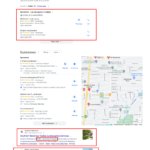Maintaining the health of your grass and soil may require regular lawn dethatching. Thatch can accumulate even if you are cutting your lawn regularly and taking care of it in every other way. Excess thatch may result from overwatering and fertilization. The thick layer of dead plant matter (thatch) is removed by detaching.
This enables your plants’ soil and access to air, water, and nutrients once more. Additionally, dethatching improves the drainage of your lawn. It will be simpler to maintain the health of your lawn if you understand why dethatching is crucial, as well as when and how to dethatch.
❓ What is dethatching?
You may be unfamiliar with dethatching but are interested in learning more. You’re in the right place, then! What exactly is it? How does it benefit your lawn, then?
Dethatching is the procedure used to get rid of too much thatch. You can keep your grass looking beautiful and healthy by doing this.
It is an effective way to get rid of extra thatch from your lawn so that nutrients, air, and water can reach the soil. The process of dethatching involves removing thick thatch from a lawn. Thatch is a layer of organic debris that has not yet decomposed, such as dead grass, rhizomes, mulched leaves, and other debris. it is essentially a strong, thorough lawn raking.
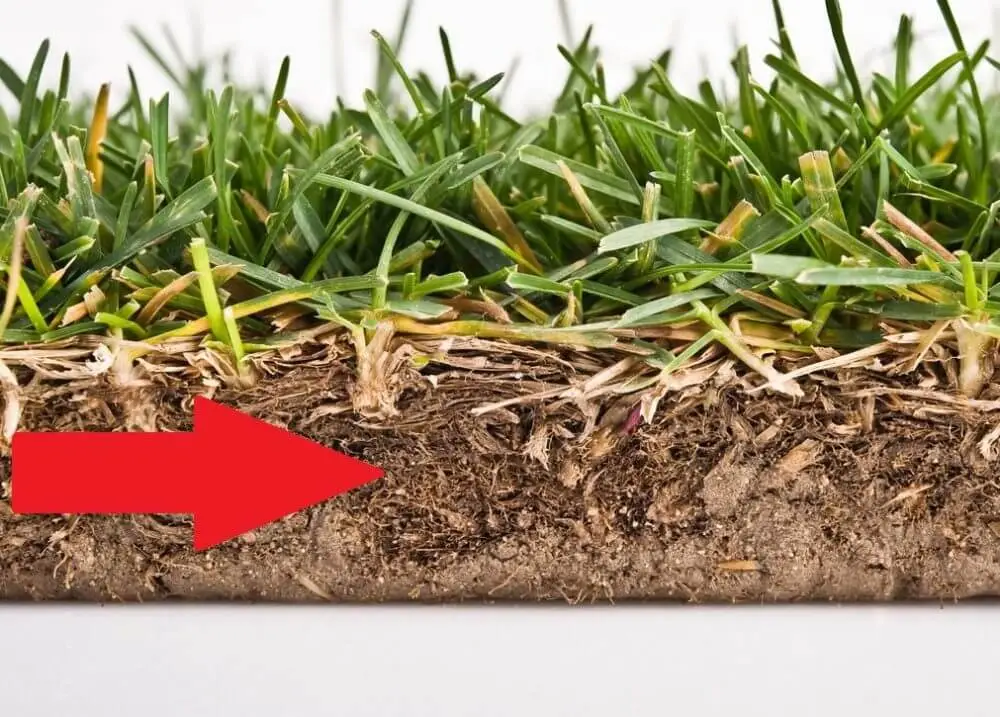
Thatch is a layer of organic plant matter, such as roots, leaves, and organic plant material, that accumulates between the soil’s surface and the turfgrass. When you take a core sample, a thatched lawn’s thatch layer squishes down and bounces back like a wet sponge.
The thatch layer not only has a sponge-like appearance, but it also acts like one. This layer of organic matter serves as a reservoir for the majority of rainwater or irrigation water. Since the water stays at the surface of the soil, grass roots aren’t compelled to swell deeply in search of water. They remain small and live contentedly in the thatch layer, where they have access to all the required water without digging far into the soil.
💊 Benefits of Dethatching
A lawn with excessive thatch buildup can benefit greatly from dethatching. If you decide to dethatch your lawn, then you can get these benefits:
- Provide access to nutrients, water, and air to grassroots.
- Increase nutrient density and soil health.
- Boost curb appeal
- Improve grass health
- Boost root vigour and depth while fostering root expansion
- Reduce vulnerability to fungus, disease, and pests
- Boost the fertilizer’s efficiency
- lessen the chance of mower scalping
- Less consumption of water
- Eliminate weeds
- Reduce runoff of stormwater
- Reduce standing water and puddles.
- Aid in winterizing your lawn and getting it ready for spring
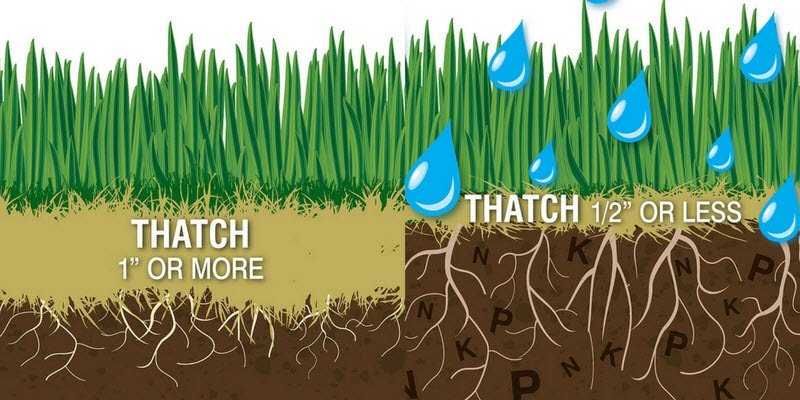
🕕 When is a good time for dethatching
You should only dethatch your lawns when the conditions are ideal to encourage a quick recovery of your grass type. Depending on where you live, late August to early October is the best time to dethatch cool-season lawns because the grass grows quickly, and there is less chance of weed seeds germination.
The recovery of the lawn will be sped up by a light fertilizer application (12 to 34 pounds of actual nitrogen per 1,000 square feet) and frequent, deep watering. It should only be done when your lawn is relaxed.
🧰 Tools and equipment required for dethatching
Dethatching devices come in a variety of designs. While there may be instances where lawn care providers and equipment rental businesses use the terms interchangeably, it is important to note that the machines employed can vary in their methods and levels of intensity.
They both consist of rotating metal pieces that pierce the thatch on the lawn and lift it. Some use metal tines, while others use slicers; experts advise using the former because it is more productive. Some are powered, self-contained units, while others are designed to be pulled behind a tractor or riding lawn mower.
1. Core Aerator

An expert piece of lawn care equipment is a core aerator. A core aerator can cost between $50 and $100 per day to rent, while one can cost between $200 and $600 or more to buy. They might not be appropriate for extremely small lawns, and improper use could result in uneven aeration or harm to the lawn.
2. Power Rakes
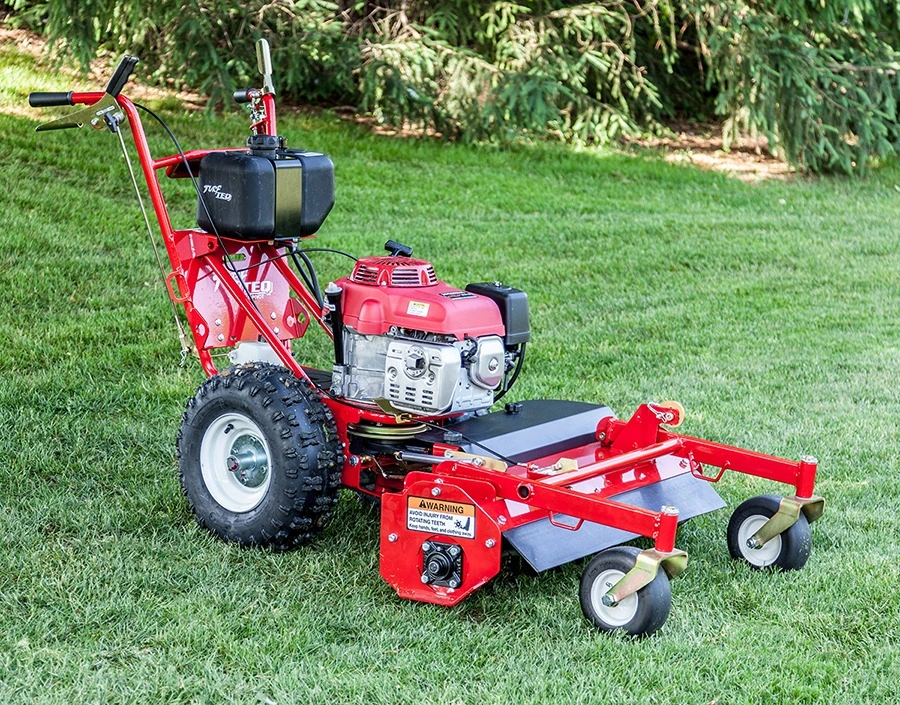
A power rake also called a dethatcher, attacks thick thatch. Since a power rake can pull up live and dead plants, using one poses some risk to the lawn. Renting a power rake typically costs between $50 and $100 per day, while buying one can cost between $300 and $800 or more.
3. Slit Seeders

Some reputable lawn care businesses own these all-in-one machines. Renting a slit seeder typically costs between $75 and $150 per day, while buying one can cost between $1,000 and $3,000 or more. However, if misused, it could cause uneven seeding and possible harm to already-existing grass if set too deeply.
4. Sod Cutter

A specialized landscaping tool called a “sod cutter” is used to remove patches of grass and soil. A sod cutter can be purchased for $1,000 to $3,000 or more while renting one typically costs $75 to $200 per day. If using a sod cutter, the lawn must be completely redone.
5. Vertical Slicer
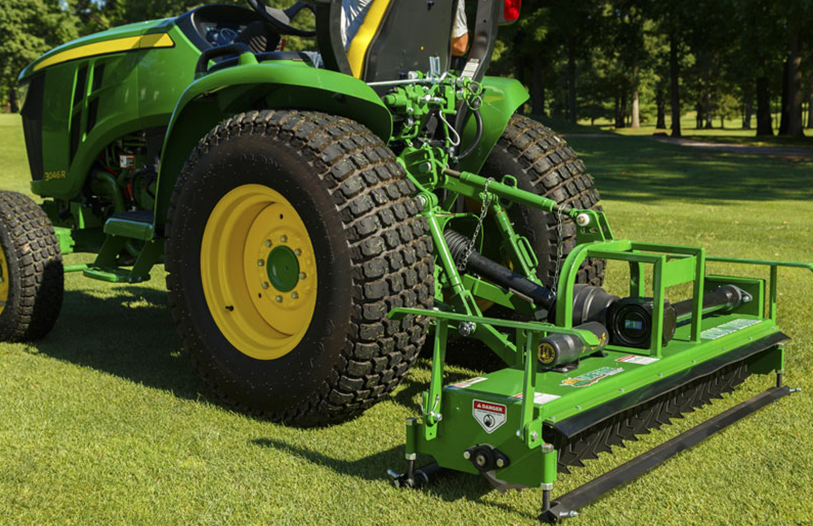
A specialized lawn care tool called a dethatcher, also known as a vertical mower, is made to effectively remove thatch and debris from the soil surface with an estimated price range of $200 to $1000. However, if not used properly, there is a chance of the lawn being harmed.
¯_( ͡❛ ͜ʖ ͡❛)_/¯ How to dethatch your lawn
Lawns can be dethatched in a number of different ways. Aerating (more on that below) might work for lawns with mild thatch levels. Alternately, use a convex rake with peculiar semicircular tines, also known as a thatching or lawn dethatcher rake. These blades, which resemble knives, cut through the thatch and sod.
A vertical mower (also known as a power rake) is the most efficient method for dethatching large lawns with significant thatch issues. It cuts through thatch like a heavy-duty power mower but uses a set of rotating vertical knives instead.
Dethatching frequently generates a significant amount of waste that needs to be removed. Compost the waste if it is weed-free and your lawn hasn’t been treated with pesticides or herbicides. Alternatively, see if your city offers a garden waste composting programme.
←→ The preparation before & After
When thatch is removed, it tends to expose some bare soil and loosen the soil at the base of the grass blades. This is a good time to apply the right fertilizers or soil amendments and oversee your lawn with more grass seed. The lawn should then be watered to relieve the stress of dethatching. It is best to perform core aeration right away following dethatching but before overseeding and amendment/feeding.

The foundation for a successful operation is good planning. Before beginning the dethatching process, there are a few crucial steps to set up your lawn for success. To make the machinery’s access to the thatch layer easier, start by cutting your lawn a little shorter than usual.
💲The cost involved in dethatching
Dethatching the lawn costs $150 to $300 per 1,000 square feet or $175 per hour for lawn care professionals (this should also include cutting grass low, roundups and add-ons). Simple, motorized dethatching machines can cost anywhere between $100 and $300.
Depending on their size and features, tow-behind dethatchers can range widely in price from about $70 to almost $3,000. Prices for non-motorized options start at just $35 for a straightforward thatching rake. Rent for a gas-powered version starts at about $50.
Slicing dethatchers are available in a wide range of configurations. One choice is an accessory that attaches to a typical walk-behind tiller, which costs about $80.00.
Options for push, walk-behind, and tow-behind vehicles can cost as little as $39 or as much as $350. Rental options are also available for slicers, with daily rates around $110.
So if you are using equipment on rent, it can be budget-friendly, but if you plan to purchase that equipment, it could cost you higher.
(>‿◠)✌ Tips you should consider during dethatching
- Timing is Everything: Depending on the type of grass you have, pick the best time of year to dethatch. Early autumn is the best time for cool-season grasses, while late spring dethatching is best for warm-season grasses.
- Water the Lawn: The day before dethatching, water your lawn well. It is simpler to remove thatch without harming the roots in moist soil.
- Select the Right Tools: Depending on the size of your lawn and the amount of thatch buildup, decide between a power dethatcher and a dethatching rake. Larger lawns are best suited for power dethatchers.
- Collect Thatch: Rake up the loose thatch and debris after dethatching. If it’s not too thick, think about composting it or properly disposing of it.
- Monitor and Maintain: Observe your lawn’s health on a regular basis after dethatching. To ensure that your efforts produce the desired results, deal with any problems right away.
✅ Conclusion
Although annual dethatching may not be necessary, check your lawn each year for thatch accumulation. Dethatching can be delayed if there is less than half an inch of thatch and you don’t notice any symptoms of your grass being in distress.
If you’re unsure of when to dethatch a lawn, you must do it when necessary. Dethatching is most effective in the fall, late summer or early autumn, depending on the climate and type of grass used. Use the right equipment to avoid overstressing your lawn, and when dethatching is required, combine it with aeration.
FAQs
What is the purpose of dethatching?
Dethatching is an effective way to get rid of extra thatch from your lawn so that nutrients, air, and water can reach the soil. Thatch is the layer of debris, dead grass, and other organic matter that lies between grass blades and the soil’s surface. Dethatching is essentially a strong, thorough lawn raking.
Is it worth buying a dethatcher?
You should choose whether to purchase a dethatcher based on your lawn’s specific needs and upkeep goals. If your lawn has a significant buildup of thatch and is having trouble absorbing nutrients and water, a dethatcher might be helpful. It’s especially helpful if manual dethatching seems impractical, given the size of the lawn. However, manual dethatching tools might be sufficient for smaller lawns with little thatch.
How is dethatching different from aerating?
They both assist in getting essential nutrients, such as fertilizer, water, or oxygen, to your lawn’s root zone so your grass can keep growing and thriving. However, dethatching removes the layers of thatch, or dead grass and other debris, from the top of the soil, whereas aeration causes the breakdown of compacted soil.
What is an alternative to dethatching?
The safer and more economical alternative to dethatching is liquid aeration. The microbial activity in the soil is much less disturbed, and it can be finished quickly and simply. Additionally, it aids in lowering compaction, encouraging deeper root development, and enhancing soil drainage.









